Cricket’s finest young talent will be on display when the 11th edition of the ICC U19 Cricket World Cup is played across four cities in Bangladesh from 27 January to 14 February 2016.The tournament, now a full-fledged biennial marquee event after taking its first tentative steps in 1988, is the stepping stone for wide-eyed youngsters towards fulfilling their dream of playing at the highest level.Players get a first-hand exposure of performing in front of live cameras and competing against rivals who they will come across again if they make the next grade to senior cricket.Eight of the 10 current Test captains have learnt the nuances and finer points of the sport at the ICC U19 Cricket World Cup. The lone exceptions are Pakistan’s Misbah-ul-Haq and AB de Villiers of South Africa.The upcoming tournament will feature nine Test-playing nations and seven Associate and Affiliate members – Afghanistan, Canada, Fiji, Ireland, Namibia, Nepal and Scotland.Here we take a look at the history of the U-19 Cricket World cup since its inception in 1988 till the last tournament played in 2014.
#1 1988
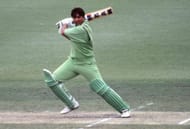
Hosts: AustraliaWinners: Australia
A brainchild of the then Australian Cricket Board’s General Manager, Graham Halbish, the inaugural ICC U19 Cricket World Cup – then named as the Youth World Cup – was staged across venues in Victoria and South Australia.
The tournament featured seven Test nations – Australia, England, India, New Zealand, Pakistan, Sri Lanka and the West Indies – besides an ICC Associates squad that comprised four players from Zimbabwe and two each from Bangladesh, Bermuda, Canada, Denmark and the Netherlands.
Among those who took part in the inaugural event and went on to become international captains were Michael Atherton and Nasser Hussain of England, Lee Germon of New Zealand, Inzamam-ul-Haq of Pakistan, Brian Lara, Jimmy Adams, and Ridley Jacobs from the West Indies and Sri Lanka’s Sanath Jayasuriya.
Other star players included Mark Ramprakash of England, Aminul Islam of Bangladesh, India’s Narendra Hirwani, the Pakistani trio of Mushtaq Ahmed, Basit Ali and Aqib Javed, and Romesh Kaluwitharana and Chandika Hathurusinghe from Sri Lanka.
The tournament was played on a single league format with Australia and Pakistan qualifying for the final by topping the league. The host avenged their defeat at Pakistan’s hands in the league to bag the title with a five-wicket win at the Adelaide Oval.
Australia’s Brett Williams was the tournament’s leading scorer with 471 runs, while team-mate Wayne Holdsworth and Pakistan’s Mushtaq Ahmed headed the bowlers’ list with 19 wickets apiece.
#2 1998
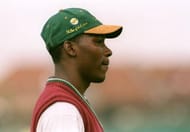
Hosts: South AfricaWinners: England
The next edition was held after a gap of 10 years with the ICC deciding to make it a biennial tournament. Hosts South Africa joined eight other Test-playing nations and seven qualifiers –Bangladesh, Denmark, Ireland, Kenya, Namibia, Papua New Guinea and Scotland – in a 16-nation event.
With an enlarged field, the format was also revised with teams divided into four groups named after former greats Don Bradman, Colin Cowdrey, Sunil Gavaskar and Garfield Sobers. The top two teams from each group qualified for the Super League, while the bottom two contested a separate Plate championships.
England defeated New Zealand by seven wickets in the Super League final while Bangladesh indicated they were ready for Test status by beating the West Indies by six wickets in the Plate final.
Star cricketers to emerge from the tournament included Virender Sehwag and Harbhajan Singh of India, Shoaib Malik and Abdul Razzaq of Pakistan, England’s Graeme Swann, Kyle Mills of New Zealand, Imran Tahir of South Africa (who played for Pakistan), Sri Lanka’s Dilhara Fernando, and Chris Gayle, Ramnaresh Sarwan and Darren Ganga from the West Indies.
Tim Anderson, the ICC’s Head of Global Development, captained Australia.
Gayle was the tournament’s leading scorer with 364 runs, while team-mate Ramnaresh Sarwan and Zimbabwe’s Mluleki Nkala were the top bowlers with 16 wickets each.
#3 2000
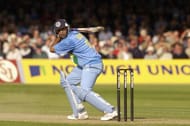
Hosts: Sri LankaWinners: India
The tournament was hosted in Asia for the first time and featured seven qualifiers – the Americas Region, Bangladesh, Ireland, Namibia, Nepal, Kenya and the Netherlands – alongside the nine Test nations.
In a fitting climax, two Asian teams contested the Super League final with India defeating hosts Sri Lanka by six wickets at the Sinhalese Sports Club in Colombo. Nepal became the first non-Test nation to progress to the quarter-finals, but South Africa won the Plate championships with an 80-run win over Bangladesh.
Graeme Smith, who went on to captain South Africa, was the tournament’s leading scorer with 348 runs and Pakistan’s Zahid Saeed topped the bowling charts with 15 wickets. Yuvraj Singh of India was named the man of the tournament.
Other future stars who competed in the tournament were Michael Clarke, Shane Watson and Mitchell Johnson of Australia, New Zealand’s Brendon McCullum, Ian Bell of England, Imran Nazir, Faisal Iqbal and Mohamamd Sami of Pakistan, Albie Morkel of South Africa and Zimbabwe’s Tatenda Taibu.
Jonathan Trott, who made a name for himself in England colours, turned out for his native South Africa in the tournament.
#4 2002
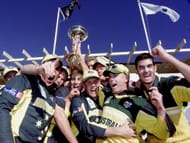
Hosts: New ZealandWinners: Australia
The Test group, now enlarged to 10 nations after the admission of Bangladesh following the 2000 event, were joined by six qualifiers -- Canada, Kenya, Namibia, Nepal, Papua New Guinea and Scotland for the next edition in New Zealand.
Australia claimed its second ICC U19 Cricket World Cup title with a seven-wicket win over South Africa in the Super League final, while Zimbabwe cantered to a 137-run victory against Nepal in the Plate final.
Cameron White of Australia was the leading scorer with 423 runs and team-mate Xavier Doherty finished as the top bowler with 16 wickets.
The tournament provided international audiences their first sighting of South Africa batting star Hashim Amla.
Other notable players who took part were Mohammad Ashraful of Bangladesh, Dwayne Bravo and Darren Sammy of the West Indies, Parthiv Patel and Irfan Pathan of India, Brendon Taylor and Elton Chigumbura of Zimbabwe, Tim Bresnan and Samit Patel of England, New Zealand’s Jesse Ryder, Azhar Ali and Umar Gul of Pakistan, and the Sri Lankan duo of Upul Tharanga and Dammika Prasad.
#5 2004
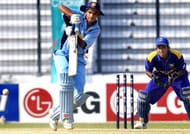
Hosts: BangladeshWinners: Pakistan
Pakistan won its first ICC U19 Cricket World Cup title when the tournament was held in Bangladesh in 2004. The event featured six qualifiers – Canada, Kenya, Namibia, Nepal, Papua New Guinea and Scotland – along with the 10 Test nations.
Pakistan defeated the West Indies by 25 runs in a closely-contested Super League final, while hosts Bangladesh stunned Australia by eight wickets in the Plate final.
Current India star Shikhar Dhawan was the leading scorer with 505 runs and was named the player of the tournament. Bangladesh’s Enamul Haque Junior was the leading wicket-taker with 22 wickets.
Other notable members of the class of 2004 were England’s Alastair Cook, Luke Wright, Ravi Bopara and Eoin Morgan (representing Ireland), India’s Suresh Raina, Robin Uthappa and Dinesh Karthik, William Porterfield of Ireland, Pakistan’s Wahab Riaz, New Zealand’s BJ Watling, South Africa’s Vernon Philander, Sri Lanka’s Angelo Mathews and Denesh Ramdin of the West Indies.
#6 2006
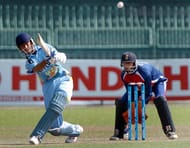
Hosts: Sri LankaWinners: Pakistan
Pakistan retained the ICC U19 Cricket World Cup title when the tournament returned to Sri Lanka for the second time with the 10 Test nations joined by qualifiers, Ireland, Namibia, Nepal, Scotland, Uganda and the United States of America.
In two edge-of-the-seat thrillers, Pakistan defeated arch-rivals India by 38 runs to win the Super League final and Nepal pipped New Zealand by one wicket to lift the Plate title.
Pakistan, led by current wicket-keeper Sarfraz Ahmed, was skittled for 109 but then hit back to bundle out India for 71 in just 18.5 overs. Anwar Ali claimed five for 35, Akhrar Ayub took three for nine and Jamshed Ahmed chipped in with two for 24.
Cheteshwar Pujara of India, who was the leading scorer with 349 runs, was named the player of the tournament. Australia’s Moises Henriques was the leading bowler with 16 wickets.
Other notable players who took part were Shakib Al Hasan and Mushfiqar Rahim of Bangladesh, Rohit Sharma and Ravindra Jadeja of India, Australia’s David Warner, New Zealand’s Martin Guptill and Tim Southee and England’s Moeen Ali.
#7 2008
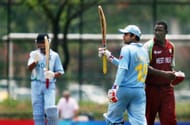
Hosts: MalaysiaWinners: India
The tournament was hosted for the first time by a non-Test playing nation when Malaysia organised the 2008 event. This time the qualifiers were Bermuda, Ireland, Malaysia, Namibia, Nepal and Papua New Guinea.
India’s current Test captain Virat Kohli led his team to victory by beating South Africa by 12 runs via the Duckworth-Lewis method after a rain-affected final at the Kinrara Academy Oval ground on the outskirts of capital Kuala Lumpur.
The West Indies defeated Nepal by seven wickets to win the Plate final.
India’s Tanmay Srivastava was the leading scorer with 262 runs, while South Africa’s Wayne Parnell took the bowling honours with 18 wickets. New Zealand’s Tim Southee was the player of the tournament which featured, among others, the late Phillip Hughes, Steven Smith and Josh Hazlewood of Australia, New Zealand’s star batsman Kane Williamson alongwith team-mates Trent Boult and Corey Anderson, and Dinesh Chandimal of Sri Lanka.
Also taking part were Steven Finn of England, Junaid Khan and Umar Akmal of Pakistan, and Thisara Perera of Sri Lanka.
#8 2010
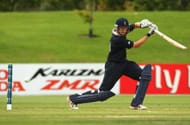
Host: New ZealandWinner: Australia
Afghanistan, Canada, Hong Kong, Ireland, Papua New Guinea and the USA were the qualifiers in the next edition in New Zealand which was won by Trans-Tasman rivals Australia. Australia beat Pakistan in a repeat of the 1988 final, this time by 25 runs, to grab its third U19 title.
Bangladesh whipped Ireland by 195 runs to win the Plate final.
South Africa’s Dominic Hendricks was the leading scorer with 391 runs and was also named the player of the tournament. Papua New Guinea’s Raymond Haoda surpassed expectations to emerge the leading wicket-taker with 15 scalps.
The class of 2010 included such notable names as Joe Root, Jos Buttler and Ben Stokes of England, South Africa’s Quinton de Kock, Jason Holder of the West Indies, India’s Lokesh Rahul, Mitchell Marsh of Australia and Doug Bracewell of New Zealand.
#9 2012
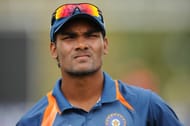
Host: AustraliaWinner: India
India joined Australia as a three-time winner of the ICC U19 Cricket World Cup with a commendable six-wicket victory over the hosts at the Tony Ireland stadium in Townsville.
Sri Lanka won the Plate championships after beating fast-improving Afghanistan by seven wickets.
The tournament was competed by the 10 Test-playing nations and six qualifiers -- Scotland, Nepal, Ireland, Afghanistan, Papua New Guinea and Namibia.
Australia was restricted to 225 for eight in its 50 overs with Will Bosisto, later named the player of the tournament, top-scoring with an unbeaten 87. Seamer Sandeep Sharma claimed four wickets.
India captain Unmukt Chand anchored his team to a victory with 111 not out that included six sixes and seven boundaries. Opening the batting, Chand stayed till the end as India coasted home with 14 balls to spare.
Bangladesh’s Anamul Haque was the tournament’s leading scorer with 365 runs, while England’s Reece Topley was the top bowler with 19 wickets. Among others who took part were Bangladesh’s Taskin Ahmed, Australia’s Ashton Agar and Afghanistan’s Najibullah Zadran.
#10 2014
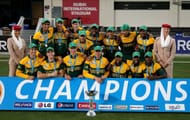
Host: United Arab EmiratesWinner: South Africa
South Africa dominated from start to finish as it emerged unbeaten through the tournament before beating crowd favourites Pakistan by six wickets in the final at the Dubai International Cricket Stadium.
Bangladesh won the Plate final with a 77-run win over New Zealand.
Having lost two finals – to Australia in 2002 and to India in 2008 – South Africa was desperate to end on the winning side in its third attempt. It bowled Pakistan out for 131 with seamer Corbin Bosch taking four wickets for 15 runs in 73 overs. It was only a defiant unbeaten 37 from Amad Butt that prolonged the Pakistan innings till the 45th over after it was reduced to 72 for seven by the 30th over.
South Africa rode on an unbeaten 66 from skipper and opening batsman Aiden Markram, and 40 by Greg Oldfield, to romp to victory in 42.1 overs after being 28 for two at one stage. Markram was named player of the tournament, in which Shadman Islam of Bangladesh was the leading scorer with 406 runs and Anuk Fernando of Sri Lanka was the leading bowler with 15 wickets.
Players who made an immediate impression at the senior level after the 2014 tournament were Kagiso Rabada of South Africa and Mustafizur Rahman of Bangladesh.
Follow IPL Auction 2025 Live Updates, News & Biddings at Sportskeeda. Get the fastest updates on Mega-Auction and cricket news
